Compact Reflective Collimators, Protected Silver Coating

- Protected-Silver-Coated Collimators/Couplers with Reflected Focal Lengths of 25.4 mm or 50.8 mm
- Maximum Fiber NA without Clipping the Beam: 0.19 or 0.11
- Free From Chromatic Aberrations
- FC/PC, FC/APC, or SMA Connector
RCR50P-P01
FC/PC Connector
RCR25A-P01
FC/APC Connector
RCR25S-P01
SMA Connector
The RCR50S-P01 Collimator is mounted on a Ø1/2" post using an SM05RC Slip Ring.
See the Mounting Options tab for more details.
Application Idea

Please Wait
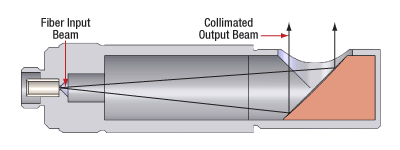
Click to Enlarge
Collimating Light from an Optical Fiber
(Can also be Used in Reverse for Coupling into Multimode Fiber)
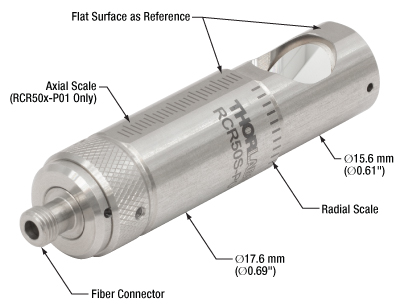
Click to Enlarge
The housing, which features engraved scales, has an outer diameter of 17.8 mm (0.70"), designed to fit into a 16 mm cage system. The flat surfaces work as reference sides. The minor ticks of the axial scale are separated by 1 mm and the major ticks by 5 mm (Item #s RCR50x-P01 only). The radial ticks on both the RCR25x-P01 and RCR50x-P01 collimators are engraved in increments of 10°.
Features
- Free From Chromatic Aberrations for Collimation Over the Mirror's Reflection Band
- Protected Silver Coating (450 nm - 20 µm) Offers High Reflection
- Ravg > 97% (450 nm - 2 µm) at 45° AOI
- Ravg > 95% (2 µm - 20 µm) at 45° AOI
- Reflected Focal Lengths of 25.4 mm or 50.8 mm
- Great for Coupling Polychromatic Light into Multimode Fiber
- Surface Roughness: <100 Å (RMS)
- Ø11.5 mm Clear Aperture
- Maximum Fiber NA without Clipping the Beam: 0.19 or 0.11 (RCR25x-P01 or RCR50x-P01, Respectively)
- Fits Within Thorlabs' 16 mm Cage System
- Non-Magnetic Stainless Steel Housing
Thorlabs' Protected Silver Compact Reflective Collimators are based on 90° off-axis parabolic (OAP) mirrors. These protected silver mirrors, unlike lenses, have focal lengths that remain constant and offer excellent reflectivity within the 450 nm - 20 µm wavelength range (please see the Specs tab for more details). Due to this intrinsic property, parabolic mirror collimators do not need to be adjusted to accommodate various wavelengths of light, making them ideal for use in systems with polychromatic light in the visible and IR. These reflective collimators have a slim design due to the orientation of the OAP mirror within the device, seen in the diagram to the right.
Common applications include collimating polychromatic light emitted from a single-mode or multimode optical fiber and coupling polychromatic collimated light into single-mode or multimode fiber. When collimating light from a single-mode or multimode patch cable, the fiber numerical aperture (NA) should be ≤0.19 or ≤0.11 to avoid clipping light on the housings of the RCR25x-P01 or RCR50x-P01 collimators, respectively. Note that in general, light from a multimode fiber cannot be well collimated. For more information on how to optimize coupling of light from an optical fiber, please see the Collimation Tutorial tab.
Scattering from the mirror surface is minimal (<2% @ 633 nm) and results from the <100 Å RMS surface roughness achieved by the diamond turning process used to manufacture the off-axis parabolic mirror.
The RCR25x-P01 and RCR50x-P01 reflective collimator housings can be mounted in SM05 lens tube mounts or easily integrated into a 16 mm cage system using an SP03 cage plate or SC6W cage cube. Please see the Mounting Options tab for more details. Both 25.4 mm and 50.8 mm RFL collimators feature an engraved radial scale with markings spaced by 10°, while the 50.8 mm RFL collimators feature an additional engraved axial scale with markings spaced by 1 mm.
Thorlabs also offers other Protected Silver Reflective Collimators for different NAs, Protected Silver, Adjustable Focus Reflective Collimators, and a line of UV-Enhanced, Aluminum-Coated Reflective Collimators for the
Fiber Patch Cables for Reflective Collimators
Thorlabs offers single mode, polarization-maintaining, or multimode fiber optic patch cables for both coupling and collimating applications. If you cannot find the appropriate stock patch cable for your application, custom-connectorized patch cables with same-day shipping are also available.
The RCRxxP-P01 and RCRxxA-P01 collimators are constructed with 2.2 mm wide-key FC/PC or FC/APC connectors, respectively. The wide key accepts both wide and narrow key connectors; however, using a narrow-key connector in a wide-key slot will allow the connector to rotate slightly in the mating sleeve.
| Specifications | ||||||
|---|---|---|---|---|---|---|
| Item # | RCR25P-P01 | RCR25A-P01 | RCR25S-P01 | RCR50P-P01 | RCR50A-P01 | RCR50S-P01 |
| Fiber Connector | FC/PC | FC/APC | SMA | FC/PC | FC/APC | SMA |
| Clear Aperture | Ø11.5 mm | |||||
| Typical Collimated Beam Diameter (1/e2)a |
Ø5.3 mm (SM400 at 450 nm) Ø4.8 mm (SM600 at 633 nm) Ø5.5 mm (780HP at 780 nm) Ø4.8 mm (SMF-28-J9 at 1550 nm) Ø5.0 mm (SM2000 at 2 µm) |
Ø10.5 mm (SM400 at 450 nm) Ø9.5 mm (SM600 at 633 nm) Ø11.0 mm (780HP at 780 nm) Ø9.6 mm (SMF-28-J9 at 1550 nm) Ø9.9 mm (SM2000 at 2 µm) |
||||
| Full Angle Beam Divergenceb | 0.006° (SM400 at 450 nm) 0.010° (SM600 at 633 nm) 0.010° (780HP at 780 nm) 0.023° (SMF-28-J9 at 1550 nm) 0.029° (SM2000 at 2 µm) |
0.003° (SM400 at 450 nm) 0.005° (SM600 at 633 nm) 0.005° (780HP at 780 nm) 0.012° (SMF-28-J9 at 1550 nm) 0.015° (SM2000 at 2 µm) |
||||
| Maximum Fiber Numerical Aperture (NA) |
0.19 | 0.11 | ||||
| Reflected Focal Length (RFL) | 25.4 mm | 50.8 mm | ||||
| Parent Focal Length (PFL)c | 12.7 mm | 25.4 mm | ||||
| Coating | Protected Silver | |||||
| Wavelength Range | 450 nm - 20 µm | |||||
| Reflectance (Avg., AOI = 45°) | >97% (0.45 - 2 µm) >95% (2 - 20 µm) |
|||||
| Surface Quality | 40-20 Scratch-Dig | |||||
| Surface Roughness | <100 Å RMS | |||||
| Reflected Wavefront Error |
<λ/4 RMS at 633 nm | |||||
| Pointing Errord | <10 mrad | <10 mrad | - | <10 mrad | <10 mrad | - |
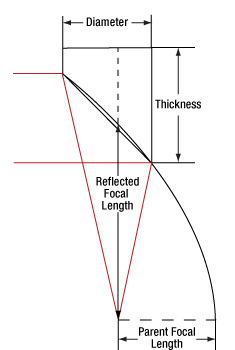
Click to Enlarge
Diagram of Beam Collimated by the OAP Mirror in the Reflective Collimator
Lens Tube and Mirror Mounts
The RCR25x-P01 and RCR50x-P01 reflective collimator housings are directly compatible with Thorlabs' Ø1/2" lens tube mounts such as the SM05RC(/M) Lens Tube Slip Ring and SM05TC Lens Tube Clamp. If tip/tilt is required, the collimator can be mounted into a mirror mount such as the POLARIS-K1E3 mount with an SM1A60 adapter.
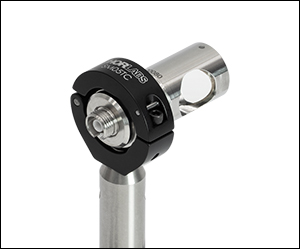
Click to Enlarge RCR25P-P01 Collimator Secured in an SM05TC Clamp
Cage System Integration
The RCR25x-P01 and RCR50x-P01 reflective collimators can be directly integrated into a 16 mm cage system using an SP03 cage plate or an SC6W cage cube, or into a 30 mm cage system by using an SM1A60 adapter and a C4W cage cube.
Collimating Light Tutorial
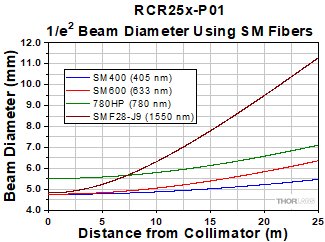
Click to Enlarge
Click Here for Theoretical Data
This data is calculated for our SM400, SM600, 780HP, and
SMF-28-J9 single mode fibers and our RCR25x-P01 compact reflective collimators.
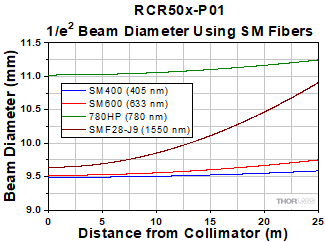
Click to Enlarge
Click Here for Theoretical Data
This data is calculated for our SM400, SM600, 780HP, and
SMF-28-J9 single mode fibers and our RCR50x-P01 compact reflective collimators.
Collimating Light from a Single Mode Fiber with a Compact Reflective Collimator
When collimating light from single-mode fibers, the Compact Reflective Fiber Collimators produce beams with large waist diameters and low divergence. The graphs to the right illustrate the theoretical 1/e2 beam diameter as a function of propagation distance for four different SM fiber-coupled laser wavelengths using our reflective collimators. The effect of changing the fiber or the wavelength can be estimated using the theoretical approximations below.
Theoretical Approximation of the Divergence Angle of an Output Beam
The divergence angle can be approximated theoretically using the formula below as long as the light emerging from the fiber has a Gaussian intensity profile. Therefore, the formula works well for single mode (SM) fibers.
The full divergence angle of the output beam using an SM fiber in degrees is approximated by

where θSM is the divergence angle of the beam after collimation, MFD is the mode field diameter of the fiber, and RFL is the reflected focal length of the reflective collimator. The MFD and RFL must have the same units in this equation.
Example Calculation:
When the RCR25A-P01 collimator (RFL = 25.4 mm) is used with the P3-630A-FC-1 SM patch cable (MFD = 4.3 µm), the divergence angle is:
θSM ≈ (0.0043 mm / 25.4 mm) x (180 / 3.1416) ≈ 0.010° or 0.17 mrad.
Theoretical Approximation of the Output Beam Diameter
The 1/e2 output beam diameter can be found using the approximation

where λ is the wavelength of light being used, MFD is the mode field diameter of the fiber, and RFL is the reflected focal length of the reflective collimator.
Example Calculation:
When the RCR25A-P01 collimator (RFL = 25.4 mm) is used with the P3-630A-FC-1 SM patch cable (MFD = 4.3 µm) at λ = 633 nm = 0.633 µm, the output beam diameter is:
d = 4 x 0.633 µm x [25.4 mm / (3.1416 x 4.3 µm)] = 4.8 mm.
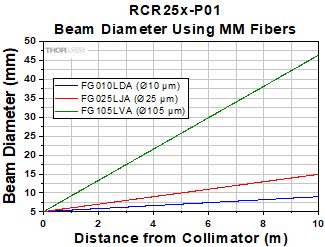
Click to Enlarge
Click Here for Theoretical Data
This data is calculated for our FG010LDA, FG025LJA, and FG105LVA multimode fibers and our RCR25x-P01 compact reflective collimators, independent of wavelength.
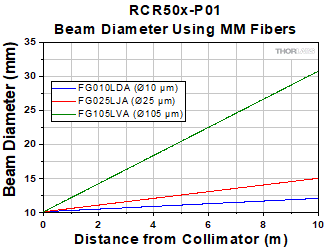
Click to Enlarge
Click Here for Theoretical Data
This data is calculated for our FG010LDA, FG025LJA, and FG105LVA multimode fibers and our RCR50x-P01 compact reflective collimators, independent of wavelength.
Collimating Light from a Multimode Fiber with a Compact Reflective Collimator
The geometrical ray model can be used to describe the collimation of light from multimode (MM) fibers. Consider an off-axis point on the MM core. Light from this point will generate a collimated beam at an angle to the optical axis of the off-axis parabolic (OAP) mirror. Superimposing beams from all points on the MM core results in an output beam with significant divergence, unlike the output from the SM fiber described above. The graphs to the right show the calculated beam diameter as a function of distance from the reflective couplers for three different MM fibers.
Theoretical Approximation of the Divergence Angle of an Output Beam
The full angle divergence of an output beam generated from a MM fiber can be approximated with the help of the reflected focal length (RFL) of the reflective collimator and the core diameter of the MM fiber as follows:

where θMM is the divergence angle of the beam after collimation, calculated in degrees.
Example Calculation:
When the RCR50S-P01 collimator (RFL = 50.8 mm) is used with the M96L01 MM patch cable (Core Diameter = 105 µm), the full divergence angle is:
θMM ≈ (0.105 mm / 50.8 mm) x (180 / 3.1416) ≈ 0.118° or 2.1 mrad.
Theoretical Approximation of the Output Beam Diameter
Based on the ray model, the beam diameter as a function of distance from the reflective collimator and NA can be approximated with the following relation:

The equation above shows that the beam diameter is more strongly affected by the numerical aperture (NA) of the fiber close to the reflecting mirror, whereas the core diameter more strongly affects the beam diameter far from the collimator.
The graphs to the right illustrate the approximated beam diameter as a function of the distance from the collimator for three different MM fibers (FG010LDA, FG025LJA, FG105LVA), all with an NA = 0.1. These results are independent of wavelength and connector type, but depend on the reflected focal length of the collimator.
Using MM fibers with NAs >0.19 for the RCR25x-P01 or >0.11 for the RCR50x-P01 (e.g., NA = 0.22, 0.39, or 0.50) will cause light to be clipped by the housing of the collimators before it reaches the OAP mirror (as shown in the images below). Therefore, when collimating light from a MM patch cable, the fiber NA should be ≤0.19 and ≤0.11 for the RCR25x-P01 and RCR50x-P01 collimators, respectively, to avoid clipping light on the housing.
Aside from all these considerations based on simple paraxial optics, please keep in mind that a perfect off-axis parabola can only collimate light without aberrations from a point source, located at the mirror's focal point. The further the point is away from the optical axis or the larger the core of the MM fiber, the larger the introduced optical aberrations for the off-axis rays of the extended source. Finally, the off-axis points of the extended source cannot be perfectly collimated. The effects of aberrations can, however, be minimized by increasing the reflected focal length of the reflective collimator or by increasing the wavelength.

Click to Enlarge
Low-NA Fiber: The green line indicates the envelope of the beam as it diverges and is collimated by the OAP mirror.

Click to Enlarge
High-NA Fiber: The red line indicates the envelope of the beam that is clipped by the collimator housing. The dashed green line shows the portion of the beam that is collimated by the OAP mirror.
Insights into Off-Axis Parabolic Mirrors
Scroll down to read about the unique properties of off-axis parabolic (OAP) mirrors and how to take advantage of them:
- Why a Parabolic Mirror Instead of a Spherical Mirror?
- Benefit of an Off-Axis Parabolic Mirror
- Directionality of OAP-Mirror-Based Reflective Collimators
Click here for more insights into lab practices and equipment.
Why a Parabolic Mirror Instead of a Spherical Mirror?
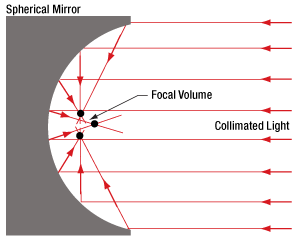
Click to Enlarge
Figure 2: Spherical mirrors do not reflect all rays in a collimated beam through a single point. A selection of intersections in the focal volume are indicated by black dots.
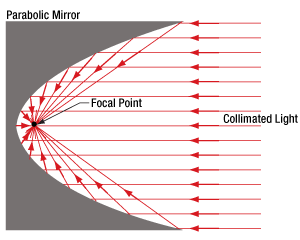
Click to Enlarge
Figure 1: Parabolic mirrors have a single focal point for all rays in a collimated beam.
Parabolic mirrors perform better than spherical mirrors when collimating light emitted by a point source or focusing a collimated beam.
Focusing Collimated Light
Parabolic mirrors (Figure 1) focus all rays in an incoming, collimated light beam to a diffraction-limited spot. In contrast, concave spherical mirrors (Figure 2) concentrate incoming collimated light into a volume larger than a diffraction-limited spot. The size of the spherical mirror's focal volume can be reduced by decreasing the diameter of the incoming collimated beam.
Collimating Light from a Point Source
A point source emits light in all directions. When this highly divergent light source is placed at the focal point of a parabolic mirror, the output beam is highly collimated. If the point source were ideal, all reflected rays would be perfectly parallel with one another.
When a point source is placed within a spherical mirror's focal volume, the output beam is not as well collimated as the beam provided by a parabolic mirror. Different rays from the point source are not perfectly parallel after reflection from the spherical mirror, but two reflected rays will be more nearly parallel when they reflect from more closely spaced points on the spherical mirror's surface. Consequently, the quality of the collimated beam can be improved by reducing the area of the reflective surface. This is equivalent to limiting the angular range over which the source in the focal volume emits light.
Choosing Between Parabolic and Spherical Mirrors
A parabolic mirror is not always the better choice. Beam diameter, cost constraints, space limitations, and performance requirements of an application all influence selection. Beam diameter is a factor, since the performance of these two mirrors is more similar when the beam diameter is smaller. Parabolic mirrors are more expensive, since their reflective profiles are more difficult to fabricate. Parabolic mirrors are also typically larger. Improved performance may or may not be more important than the difference in cost and physical size.
Date of Last Edit: Dec. 4, 2019
Benefit of an Off-Axis Parabolic Mirror
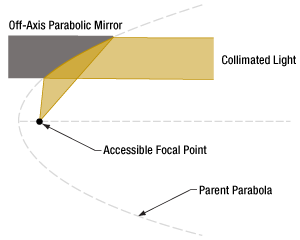
Click to Enlarge
Figure 4: An off-axis parabolic mirror can be thought of as a section of the larger parabolic shape. Both have the same focal point, but it is more accessible in the case of an OAP mirror.
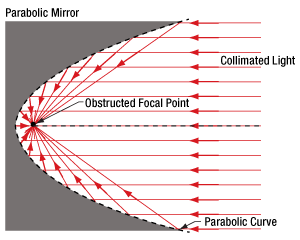
Click to Enlarge
Figure 3: The focal point of an on-axis parabolic mirror is close to the reflective surface, and typically surrounded by the reflective surface, which makes the focal point difficult to access.
One of the primary benefits of a concave parabolic mirror is its single focal point. All rays travelling parallel to the mirror's axis are reflected through this point. This is useful for a range of purposes, including imaging and manufacturing applications that require focusing laser light to a diffraction limited spot.
There are a few negatives associated using with using conventional parabolic mirrors, which are symmetric around the focal point (Figure 3). One is that the sides of the mirror generally obstruct access to the focus. Another is that when the mirror is used to collimate a divergent light source, the housing of the light source blocks a portion of the collimated beam. In particular, light emitted at small angles with respect to the optical axis of the mirror is typically obstructed.
An off-axis parabolic (OAP) mirror (Figure 4) is one solution to this problem. The reflective surface of this mirror is parabolic in shape, but it is not symmetric around the focal point. The reflective surface of the OAP corresponds to a section of the parent parabola that is shifted away from the focal point. The section chosen depends on the desired angle and / or distance between the focal point and the center of the mirror.
Date of Last Edit: Dec. 4, 2019
Directionality of OAP-Mirror-Based Reflective Collimators
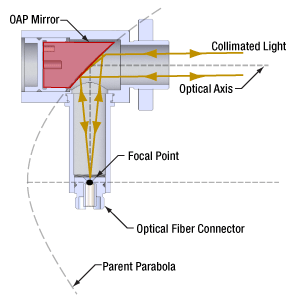
Click to Enlarge
Figure 6: The reflective element of the collimator is an off-axis parabolic mirror. The mirror's substrate is highlighed in red. The shape of the reflective surface is a segment of the parabolic curve displaced from the vertex. The focal points of the parent parabola and the OAP mirror coincide.
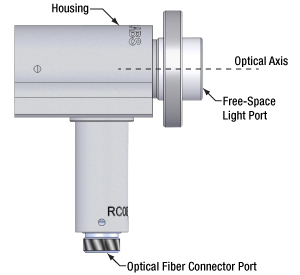
Click to Enlarge
Figure 5: Thorlabs offers reflective collimators that include a port for an optical fiber connector and a port for free space, collimated light that propagates parallel to the optical axis.
The two ports on Thorlabs' reflective collimators are not interchangeable. One port accepts an optical fiber connector and requires the highly divergent light of a point source. The other port is designed solely for collimated, free-space light (Figure 5).
Free Space Port
Light input to this port should be collimated and directed parallel to the optical axis. Diverging light from a fiber end face, a laser diode, or other source should not be input. This light would not be collimated at the fiber connector port or coupled into the fiber connected to the fiber port.
Optical Fiber Connector Port
This port aligns the fiber's end face with the focal point of the mirror. Since the fiber's end face approximates a point source placed at the focal point, a collimated beam is output from the free-space port. The alignment of the fiber end face with the focal point is also the reason that all light input to the free-space light port should be collimated and directed parallel to the optical axis.
Source of Directionality
The collimator's directionality is a consequence of using a non-rotationally symmetric, off-axis parabolic (OAP) mirror as the reflective element (Figure 6). The cut-away view illustrates that the fiber's end face is positioned at the focal point of the parent parabola, which is also the focal point of the OAP mirror.
Date of Last Edit: Dec. 4, 2019
| Posted Comments: | |
| No Comments Posted |
Fiber Collimator Selection Guide
Click on the collimator type or photo to view more information about each type of collimator.
| Type | Description | |
|---|---|---|
| Fixed FC, APC, or SMA Fiber Collimators | 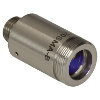 |
These fiber collimation packages are pre-aligned to collimate light from an FC/PC-, FC/APC-, or SMA-terminated fiber. Each collimation package is factory aligned to provide diffraction-limited performance for wavelengths ranging from 405 nm to 4.55 µm. Although it is possible to use the collimator at detuned wavelengths, they will only perform optimally at the design wavelength due to chromatic aberration, which causes the effective focal length of the aspheric lens to have a wavelength dependence. |
| Air-Spaced Doublet, Large Beam Collimators | 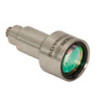 |
For large beam diameters (Ø5.3 - Ø8.5 mm), Thorlabs offers FC/APC, FC/PC, and SMA air-spaced doublet collimators. These collimation packages are pre-aligned at the factory to collimate a laser beam propagating from the tip of an FC or SMA-terminated fiber and provide diffraction-limited performance at the design wavelength. |
| Triplet Collimators | 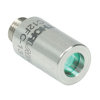 |
Thorlabs' High Quality Triplet Fiber Collimation packages use air-spaced triplet lenses that offer superior beam quality performance when compared to aspheric lens collimators. The benefits of the low-aberration triplet design include an M2 term closer to 1 (Gaussian), less divergence, and less wavefront error. |
| Achromatic Collimators for Multimode Fiber | 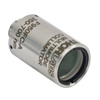 |
Thorlabs' High-NA Achromatic Collimators pair a meniscus lens with an achromatic doublet for high performance across the visible to near-infrared spectrum with low spherical aberration. Designed for use with high-NA multimode fiber, these collimators are ideal for Optogenetics and Fiber Photometry applications. |
| Reflective Collimators | 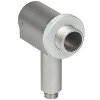 |
Thorlabs' metallic-coated Reflective Collimators are based on a 90° off-axis parabolic mirror. Mirrors, unlike lenses, have a focal length that remains constant over a broad wavelength range. Due to this intrinsic property, a parabolic mirror collimator does not need to be adjusted to accommodate various wavelengths of light, making them ideal for use with polychromatic light. Our fixed reflective collimators are recommended for collimating single and multimode fiber and coupling into multimode fiber. These collimators are available with UV-enhanced aluminum or protected silver reflective coatings and with FC/PC, FC/APC, or SMA connector compatibility. |
| Compact Reflective Collimators |  |
Thorlabs' Compact Reflective Collimators incorporate a 90° off-axis parabolic mirror with a protected silver coating. Because the focal length is independent of wavelength for an off-axis parabolic mirror, they are ideal for use with polychromatic light. Our fixed reflective collimators are recommended for collimating single and multimode fiber and coupling into multimode fiber. These collimators are directly compatible with our 16 mm cage system. They are available with FC/PC, FC/APC, or SMA connector inputs. |
| Adjustable Reflective Collimators | 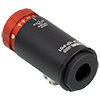 |
Thorlabs' Adjustable Focus Reflective Collimators are based on a 90° off-axis parabolic (OAP) mirror with a protected silver coating. The adjustable fiber-to-OAP distance, combined with the OAP having a constant focal length across wavelengths, makes these collimators ideal for optimizing collimation or coupling of polychromatic light with single mode or multimode fiber. These adjustable collimators have a 15 mm reflected focal length and are available with FC/PC, FC/APC, or SMA connectors. |
| FiberPorts | 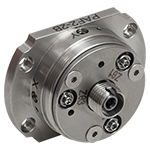 |
These compact, ultra-stable FiberPort micropositioners provide an easy-to-use, stable platform for coupling light into and out of FC/PC, FC/APC, or SMA terminated optical fibers. It can be used with single mode, multimode, or PM fibers and can be mounted onto a post, stage, platform, or laser. The built-in aspheric or achromatic lens is available with five different AR coatings and has five degrees of alignment adjustment (3 translational and 2 pitch). The compact size and long-term alignment stability make the FiberPort an ideal solution for fiber coupling, collimation, or incorporation into OEM systems. |
| Adjustable Fiber Collimators |  |
These collimators are designed to connect onto the end of an FC/PC, FC/APC, or SMA connector and contain an AR-coated aspheric lens. The distance between the aspheric lens and the tip of the fiber can be adjusted to compensate for focal length changes or to recollimate the beam at the wavelength and distance of interest. |
| Achromatic Fiber Collimators with Adjustable Focus |  |
Thorlabs' Achromatic Fiber Collimators with Adjustable Focus are designed with an effective focal length (EFL) of 20 mm, 40 mm, or 80 mm, have optical elements broadband AR coated for one of three wavelength ranges, and are available with FC/PC, FC/APC, or SMA905 connectors. A four-element, air-spaced lens design produces superior beam quality (M2 close to 1) and less wavefront error when compared to aspheric lens collimators. These collimators can be used for free-space coupling into a fiber, collimation of output from a fiber, or in pairs for collimator-to-collimator coupling over long distances, which allows the beam to be manipulated prior to entering the second collimator. |
| Zoom Fiber Collimators | 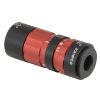 |
These collimators provide a variable focal length between 6 and 18 mm, while maintaining the collimation of the beam. As a result, the size of the beam can be changed without altering the collimation. This universal device saves time previously spent searching for the best suited fixed fiber collimator and has a very broad range of applications. They are offered with FC/PC, FC/APC, or SMA905 connectors with three different antireflection wavelength ranges to choose from. |
| Single Mode Pigtailed Collimators | 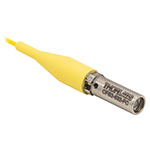 |
Our single mode pigtailed collimators come with one meter of fiber, consist of an AR-coated aspheric lens pre-aligned with respect to a fiber, and are collimated at one of eight wavelengths: 532 nm, 633 nm, 780 nm, 850 nm, 1030 nm, 1064 nm, 1310 nm, or 1550 nm. Although it is possible to use the collimator at any wavelength within the coating range, the coupling loss will increase as the wavelength is detuned from the design wavelength. |
| Polarization Maintaining Pigtailed Collimators | 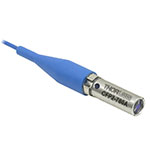 |
Our polarization maintaining pigtailed collimators come with one meter of fiber, consist of an AR-coated aspheric lens pre-aligned with respect to a fiber, and are collimated at one of five wavelengths: 633 nm, 780 nm, 980 nm, 1064 nm, or 1550 nm. Custom wavelengths and connectors are available as well. A line is engraved along the outside of the housing that is parallel to the fast axis. As such, it can be used as a reference when polarized light is launched accordingly. Although it is possible to use the collimator at any wavelength within the coating range, the coupling loss will increase as the wavelength is detuned from the design wavelength. |
| GRIN Fiber Collimators | 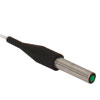 |
Thorlabs offers gradient index (GRIN) fiber collimators that are aligned at a variety of wavelengths from 630 to 1550 nm and have either FC terminated, APC terminated, or unterminated fibers. Our GRIN collimators feature a Ø1.8 mm clear aperture, are AR-coated to ensure low back reflection into the fiber, and are coupled to standard single mode or graded-index multimode fibers. |
| GRIN Lenses | 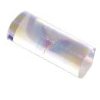 |
These graded-index (GRIN) lenses are AR coated for applications at 630, 830, 1060, 1300, or 1560 nm that require light to propagate through one fiber, then through a free-space optical system, and finally back into another fiber. They are also useful for coupling light from laser diodes into fibers, coupling the output of a fiber into a detector, or collimating laser light. Our GRIN lenses are designed to be used with our Pigtailed Glass Ferrules and GRIN/Ferrule sleeves. |

- Reflected Focal Lengths of 25.4 mm or 50.8 mm
- 2.2 mm Wide-Key FC/PC Connector
| Item #a | RFLb | Max Fiber NAc | Typical Collimated Beam Diameter (1/e2)d | Full Angle Beam Divergencee |
|---|---|---|---|---|
| RCR25P-P01 | 25.4 mm | 0.19 | Ø5.3 mm (SM400 at 450 nm) Ø4.8 mm (SM600 at 633 nm) Ø5.5 mm (780HP at 780 nm) Ø4.8 mm (SMF-28-J9 at 1550 nm) Ø5.0 mm (SM2000 at 2 µm) |
0.006° (SM400 at 450 nm) 0.010° (SM600 at 633 nm) 0.010° (780HP at 780 nm) 0.023° (SMF-28-J9 at 1550 nm) 0.029° (SM2000 at 2 µm) |
| RCR50P-P01 | 50.8 mm | 0.11 | Ø10.5 mm (SM400 at 450 nm) Ø9.5 mm (SM600 at 633 nm) Ø11.0 mm (780HP at 780 nm) Ø9.6 mm (SMF-28-J9 at 1550 nm) Ø9.9 mm (SM2000 at 2 µm) |
0.003° (SM400 at 450 nm) 0.005° (SM600 at 633 nm) 0.005° (780HP at 780 nm) 0.012° (SMF-28-J9 at 1550 nm) 0.015° (SM2000 at 2 µm) |

- Reflected Focal Lengths of 25.4 mm or 50.8 mm
- 2.2 mm Wide-Key FC/APC Connector
| Item #a | RFLb | Max Fiber NAc | Typical Collimated Beam Diameter (1/e2)d | Full Angle Beam Divergencee |
|---|---|---|---|---|
| RCR25A-P01 | 25.4 mm | 0.19 | Ø5.3 mm (SM400 at 450 nm) Ø4.8 mm (SM600 at 633 nm) Ø5.5 mm (780HP at 780 nm) Ø4.8 mm (SMF-28-J9 at 1550 nm) Ø5.0 mm (SM2000 at 2 µm) |
0.006° (SM400 at 450 nm) 0.010° (SM600 at 633 nm) 0.010° (780HP at 780 nm) 0.023° (SMF-28-J9 at 1550 nm) 0.029° (SM2000 at 2 µm) |
| RCR50A-P01 | 50.8 mm | 0.11 | Ø10.5 mm (SM400 at 450 nm) Ø9.5 mm (SM600 at 633 nm) Ø11.0 mm (780HP at 780 nm) Ø9.6 mm (SMF-28-J9 at 1550 nm) Ø9.9 mm (SM2000 at 2 µm) |
0.003° (SM400 at 450 nm) 0.005° (SM600 at 633 nm) 0.005° (780HP at 780 nm) 0.012° (SMF-28-J9 at 1550 nm) 0.015° (SM2000 at 2 µm) |

- Reflected Focal Lengths of 25.4 mm or 50.8 mm
- SMA Connectors Ideal for Multimode Fibers
| Item #a | RFLb | Max Fiber NAc | Typical Collimated Beam Diameter (1/e2)d | Full Angle Beam Divergencee |
|---|---|---|---|---|
| RCR25S-P01 | 25.4 mm | 0.19 | Ø5.3 mm (SM400 at 450 nm) Ø4.8 mm (SM600 at 633 nm) Ø5.5 mm (780HP at 780 nm) Ø4.8 mm (SMF-28-J9 at 1550 nm) Ø5.0 mm (SM2000 at 2 µm) |
0.006° (SM400 at 450 nm) 0.010° (SM600 at 633 nm) 0.010° (780HP at 780 nm) 0.023° (SMF-28-J9 at 1550 nm) 0.029° (SM2000 at 2 µm) |
| RCR50S-P01 | 50.8 mm | 0.11 | Ø10.5 mm (SM400 at 450 nm) Ø9.5 mm (SM600 at 633 nm) Ø11.0 mm (780HP at 780 nm) Ø9.6 mm (SMF-28-J9 at 1550 nm) Ø9.9 mm (SM2000 at 2 µm) |
0.003° (SM400 at 450 nm) 0.005° (SM600 at 633 nm) 0.005° (780HP at 780 nm) 0.012° (SMF-28-J9 at 1550 nm) 0.015° (SM2000 at 2 µm) |
 Products Home
Products Home











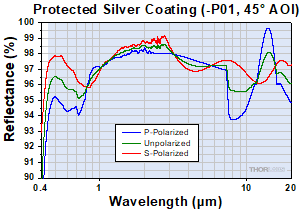
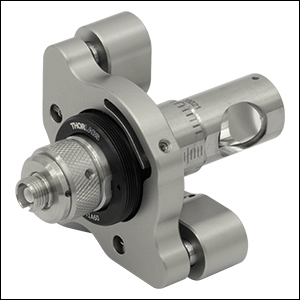
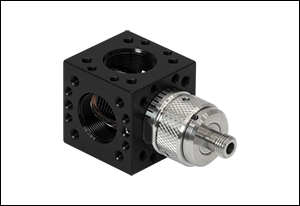
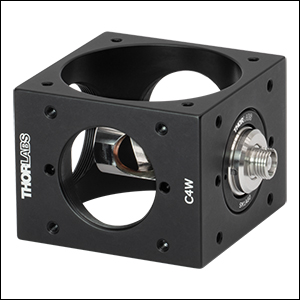

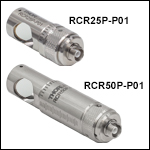
 Zoom
Zoom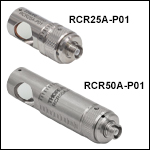
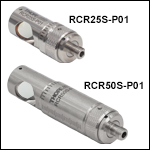
 Protected Silver Compact Reflective Collimators
Protected Silver Compact Reflective Collimators